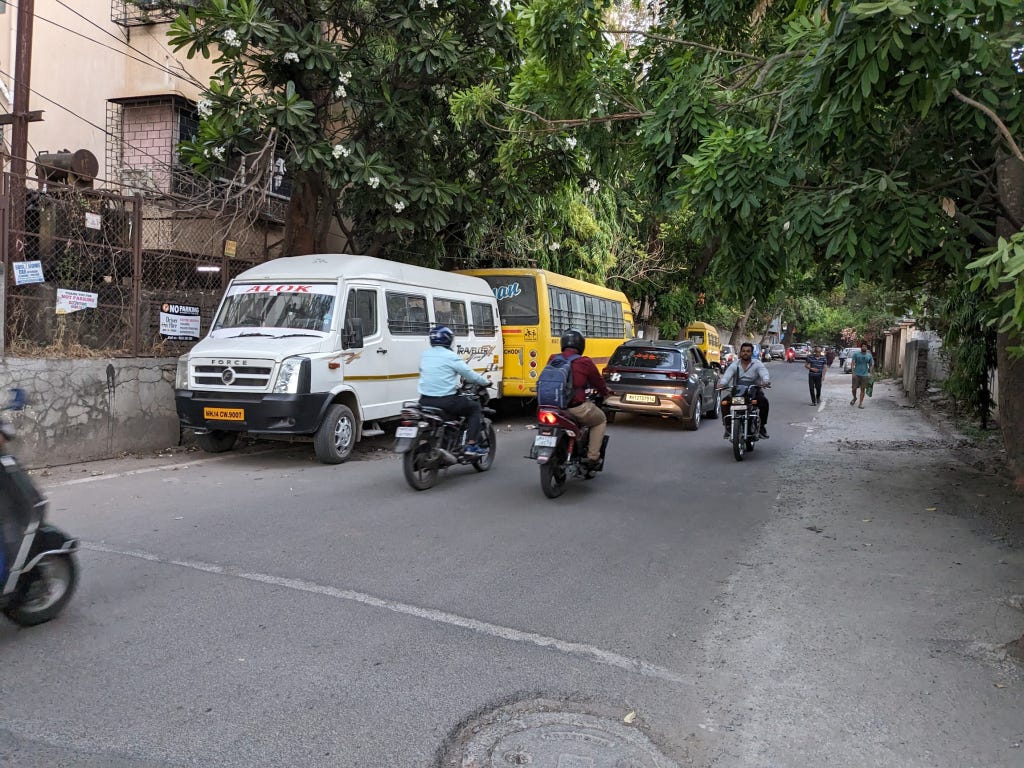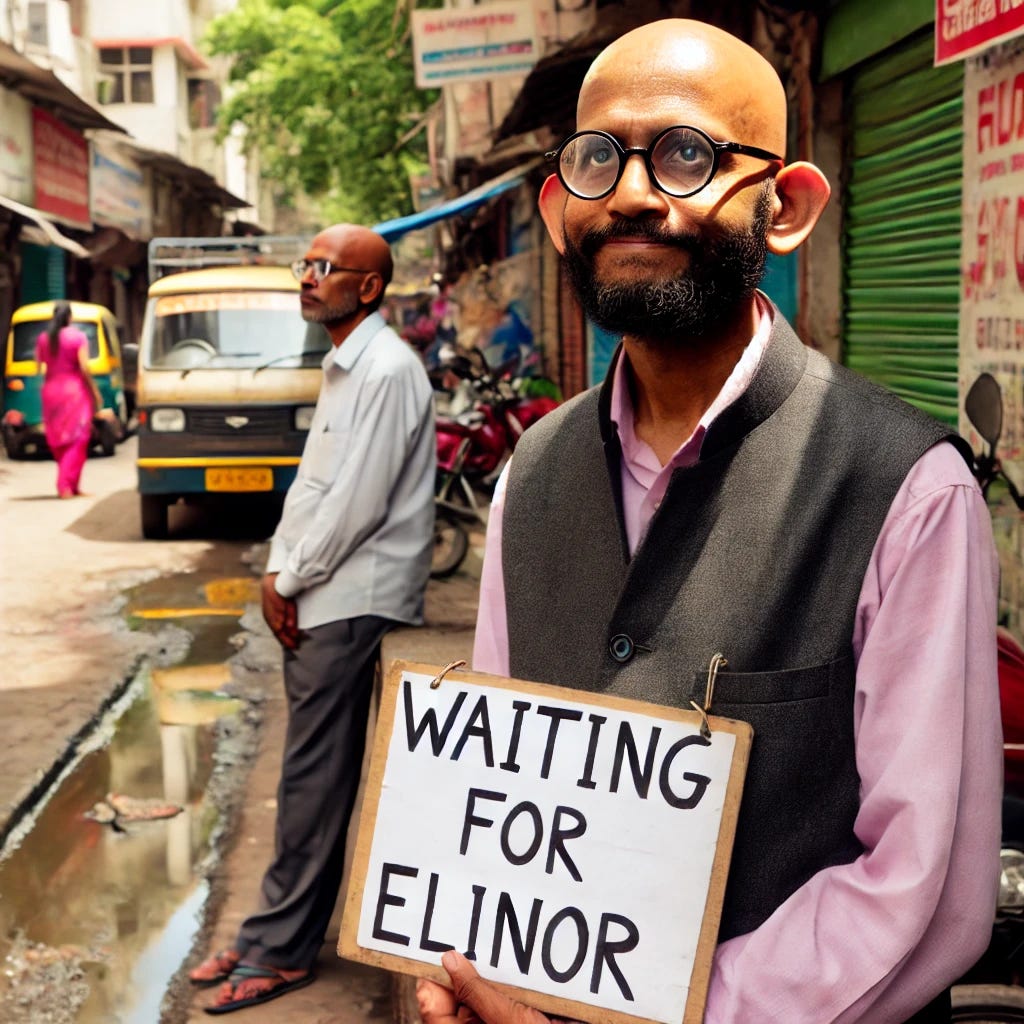In Which Garett Comes to Someshwarwadi (But Elinor Can't)
I stay in Someshwarwadi. It's a small little locality that lies between two other localities in Pune, Baner and Pashan. It is famous for a Someshwar temple that was built sometime in the 12th century (or thereabouts), and little else.
But one thing that it should be famous for is the fact that it will lie right next door to a marvel that is coming up in Pune - the Pune Metro. That alone is not enough to make it famous, of course, because one hopes that lots of areas in Pune will lie next to the Pune Metro.
What ought to make Someshwarwadi famous is the fact that commuters can soon get off a world class metro, and then not have footpaths to walk on. Yup, you read that right: all of Someshwarwadi has no footpaths.
https://twitter.com/AshishPonders/status/1582258918952439808
Nothing gives economists greater pleasure than using jargon, so of course we have a name for this phenomenon. What phenomenon, you ask? That of building metros before attempting to build footpaths. Us economists, we call it isomorphic mimicry. I come from a city that can give this phenomenon much better names, especially in our own language, but we'll leave that be for now.
But not having footpaths is problematic, of course. And not just because walking becomes an adventure sport with life and death consequences. It is also problematic because Garett has come a-visitin'.
Who is Garett? Why, Hardin, of course:
The tragedy of the commons is a metaphoric label for a concept that is widely discussed, and criticised, in economics, ecology and other sciences. According to the concept, should a number of people enjoy unfettered access to a finite, valuable resource such as a pasture, they will tend to over-use it, and may end up destroying its value altogether. Even if some users exercised voluntary restraint, the other users would merely supplant them, the predictable result being a tragedy for all. The metaphor is the title of a 1968 essay by ecologist Garrett Hardin. As another example, he cited a watercourse which all are free to pollute. The concept itself did not originate with Hardin, but rather extends back to classical antiquity, being discussed by Aristotle.
In Someshwarwadi, people do enjoy unfettered access to a finite, valuable resource: the side of the road. There are no footpaths, no "No Parking" signs, no nothing. So everything and everyone - cars, abandoned cars, people, garbage and stray dogs, among other things and beings - jostles for space.
And speaking of "other users who would supplant", we have new members in this crowded club: school-buses.
These school-bus owners take advantage of the fact that there is an absence of no parking signs on this road, and solve for themselves the problem of where to park these large vehicles. Which is all well and good for them, of course, but is a less than desirable state of affairs for the rest of us in Someshwarwadi. Unfettered access for all results in a less than ideal outcome for all. Why, Garrett bhai was writing about Someshwarwadi while working in the United States in the 1960's! Must have been a prescient sort of fellow.
Students of economics and ecology know what is coming up next. Here we go, they are thinking to themselves as they impatiently scroll through. Hurry up and get Elinor in here already!
It was long unanimously held among economists that natural resources that were collectively used by their users would be over-exploited and destroyed in the long-term. Elinor Ostrom disproved this idea by conducting field studies on how people in small, local communities manage shared natural resources, such as pastures, fishing waters and forests. She showed that when natural resources are jointly used by their users, in time, rules are established for how these are to be cared for and they become used in a way that is both economically and ecologically sustainable
But as you will see from the title of this post, it ain't quite so simple. As I have mentioned in the title of this post already, Garett is very much in Someshwarwadi, but Elinor cannot make it here, alas.
And why is that? It is because the area in question also has a local, extremely well connected political presence that, er, "decides" everything. Enforcement of local customs in Someshwarwadi is a top-down thing, not a bottom up thing. So yes, rules are established, sure, but not by folks who are motivated to strive for solutions that "economically and ecologically sustainable".
What we get are promises of footpaths and of no parking signs. Actual footpaths will be delivered as soon as we figure out how to solve the problem of isomorphic mimicry. Until then, parked buses and Mr. Hardin will be permanent fixtures of our little neighborhood.
Ah well. So it goes.



